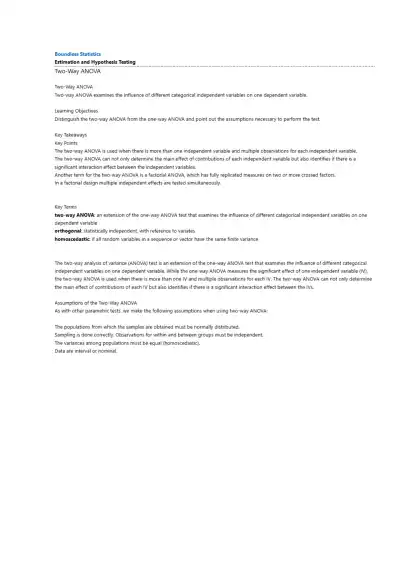Page 1

Loading page ...
Learn about Two-Way ANOVA, a statistical method to analyze the effects of two independent variables on one dependent variable. Understand main and interaction effects, assumptions, and how it differs from one-way ANOVA in factorial designs.

Loading page ...
This document has 3 pages. Sign in to access the full document!